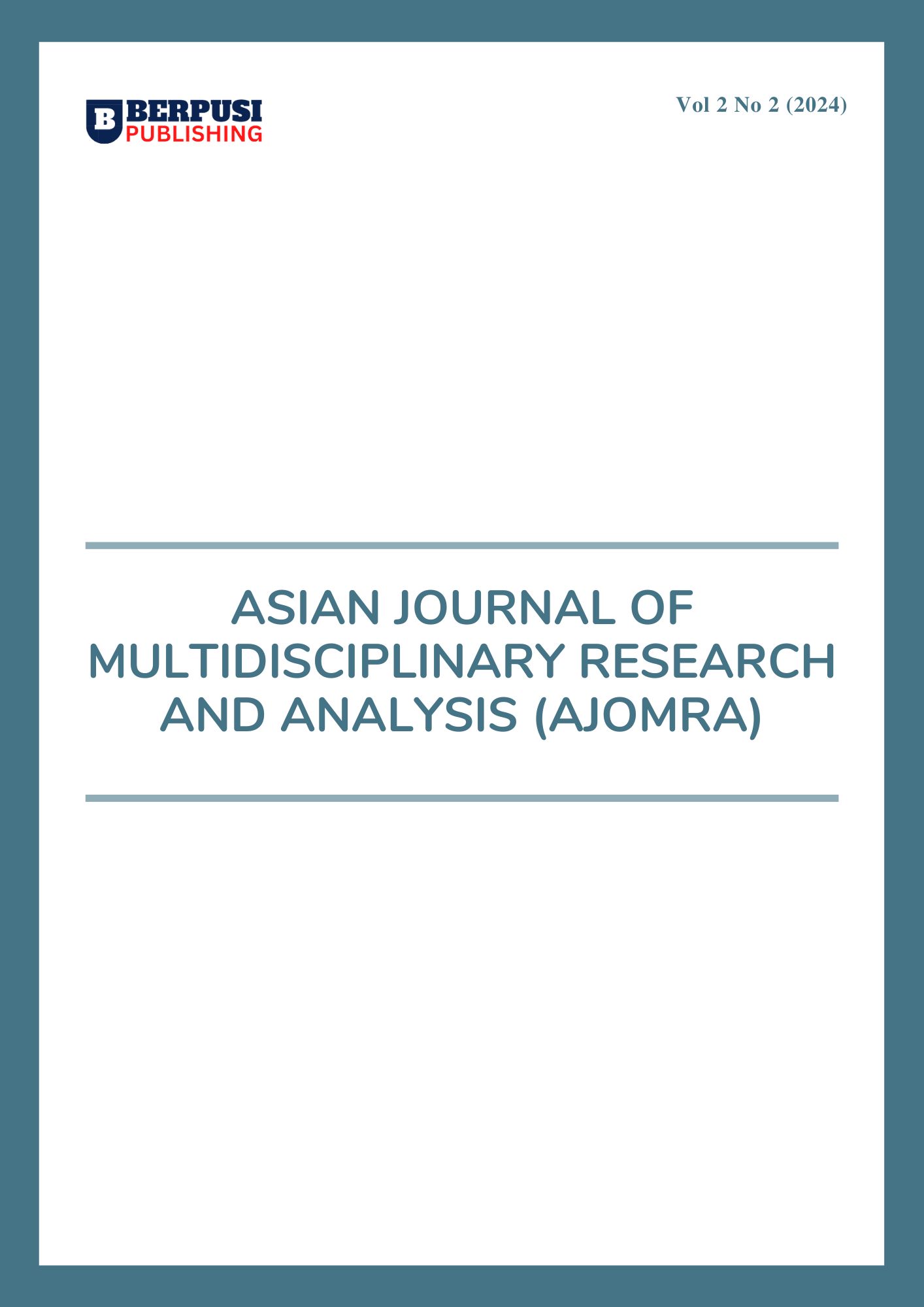Application of Mind Mapping Learning Method to Improve Students' Creativity in Citizenship Education Learning
Keywords:
Mind Mapping, Creativity, Citizenship EducationAbstract
The purpose of this study was to determine how the application of the mind mapping method to improve creativity in learning Citizenship Education. The study used a literature study method whose review was conducted descriptively with supporting materials obtained from various literatures and the discussion focused on research topics related to Citizenship Education. The results of the study showed that the Mind mapping method can improve students' creativity in learning Pancasila and Citizenship Education. The use of mind mapping in improving learning outcomes is certainly chosen by teachers as an alternative. According to Dimyanti and Mudjiono (2009): (200) learning outcomes are a level of success marked by a value. Learning outcomes are not a learning activity marked by a value, learning outcomes are not a mastery of training results but rather a change in behavior (Hamalik, 2008:27) Based on the results of data analysis and discussion, the conclusion that can be drawn from this study is that the application of the mind mapping method can improve student learning outcomes. The teaching and learning process is an activity that takes place by involving various components that interact with each other to achieve goals, one of which is student creativity. Mind mapping is also one of the learning methods where students are able to be creative in producing an idea or thought. This is also in accordance with the nature of physics that involves creative activities and imagination and discoveries that can encourage students to develop divergent, original thinking, make predictions and experiment Creativity is indeed not the main factor in education but good education is education that is able to stimulate students to develop their creativity. Creativity is a characteristic of human courage that echoes who they are and what humans become in the future. In learning activities, the process of implementing mind mapping can increase student creativity because basically the way mind mapping works involves the basic workings of the brain which are arranged in more branches like a tree. The results of the study showed that the Mind mapping method can increase student creativity in learning Pancasila and Citizenship Education.
References
Arsyad, A. (2011). Learning Media. Jakarta: PT. Raja.
Buzan, T.(2006). Mind Map to Increase Creativity.Jakarta: PT. Gramedia Pustaka Utama.
Darusman Rijal. 2014 Application of Mind Mapping method to improve.
Dimyati and Mudjiono. (2009). Learning and Teaching. Jakarta: Rineka Cipta.
Fauziah, D. (2017). Application of Mind Map Model to Improve Creativity and Students' Understanding of the Material of the History of the Islamic Kingdom in Indonesia. Elementary School Mimbar, Vol. 4, No. 2. Ejournal Upi Bandung. Grafindo Persada
Hamalik, Oemar. (2008). Teaching and Learning Process. Jakarta: Sinar Grafika.
Hasna. Creative thinking ability of junior high school students' mathematics. Scientific Journal of MTs Miftahul
Mulyasa, E. (2013). Development and Implementation of the 2013 Curriculum. Yogyakarta: Rosdakarya Youth. Mudjiono et.al., (2009)
Olivia, F. (2013). 5-7 Minutes of Creative Mind Mapping Fun. Jakarta.:Elex Media Komputindo Experience of Ten Indonesian Creative Figures, 2001. Developing Creativity. Jakarta: Pustaka Popular Obor.
Prastyo, A. (2016). The Influence of Mind Mapping Method on the Creativity of Fifth Grade Students in Mathematics Subjects at Banyuanyar 1 Surakarta Elementary School in the 2016/2017 Academic Year. PGSD Journal. Slamet Riyadi University Education Publication, Vol. V, No. 3, 2015. Makassar State University.
Shoimin, A. (2016). 68 Innovative Learning Models in the 2013 Curriculum. 2nd edition. Jakarta: Ar-Ruzz Media. .
Swadarma, D. (2013). Mind Mapping in Learning Curriculum. Jakarta: Elek Media Komputindo.
Syam, N. & Ramlah Ramlah. (2015). Application of Mind Mapping Learning Model in Improving Learning Outcomes in Social Science Subjects of Grade IV Students of SDN 54 Parepare City. Journal
Tapantoko, AA(2011). The Use of Mind Mapping Method to Improve Students’ Learning Motivation in Mathematics Learning of Grade VII Students of SMP Negeri 4 Depok. Thesis. FMIPA UNY. Unpublished. Educational Publication, Vol. V, No. 3 Year 2015. Makassar State University.
Wikipedia (2011). Mind Map.[online] Available :http://en.wikipedia.org/wiki/mind_map. [August 12, 2011].
Windura, S. (2013). 1st Mind Map For Students, Teachers And Parents. Jakarta: Elex Media Komputindo.
Wulandari, FA, Mawardi & Krisma WW (2019). Improving Creative Thinking Skills of Grade 5 Students Using the Mind Mapping Model. Elementary School Scientific Journal, Vol. 3, No 1. Satya Wacana Christian University of Indonesia.



